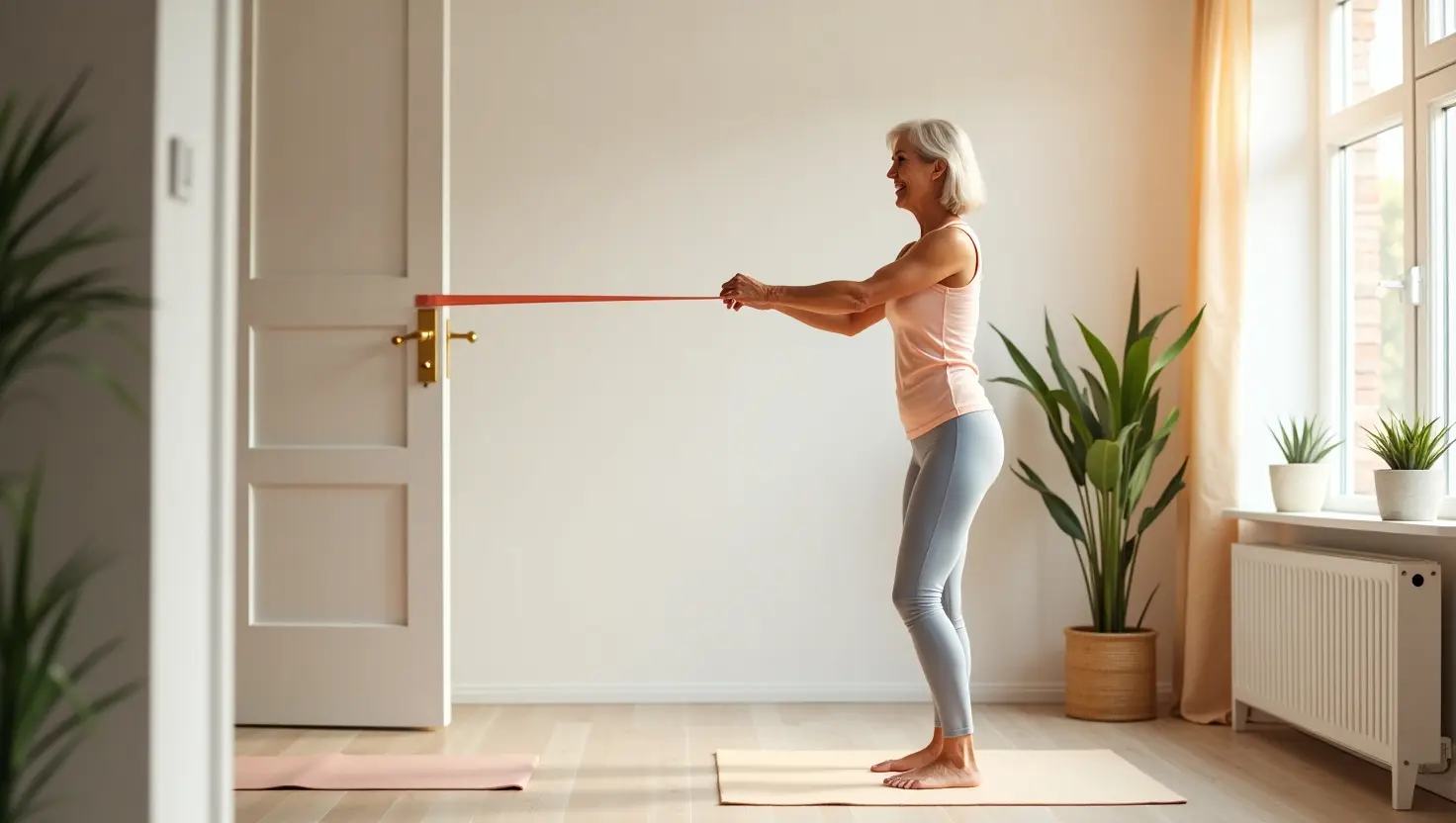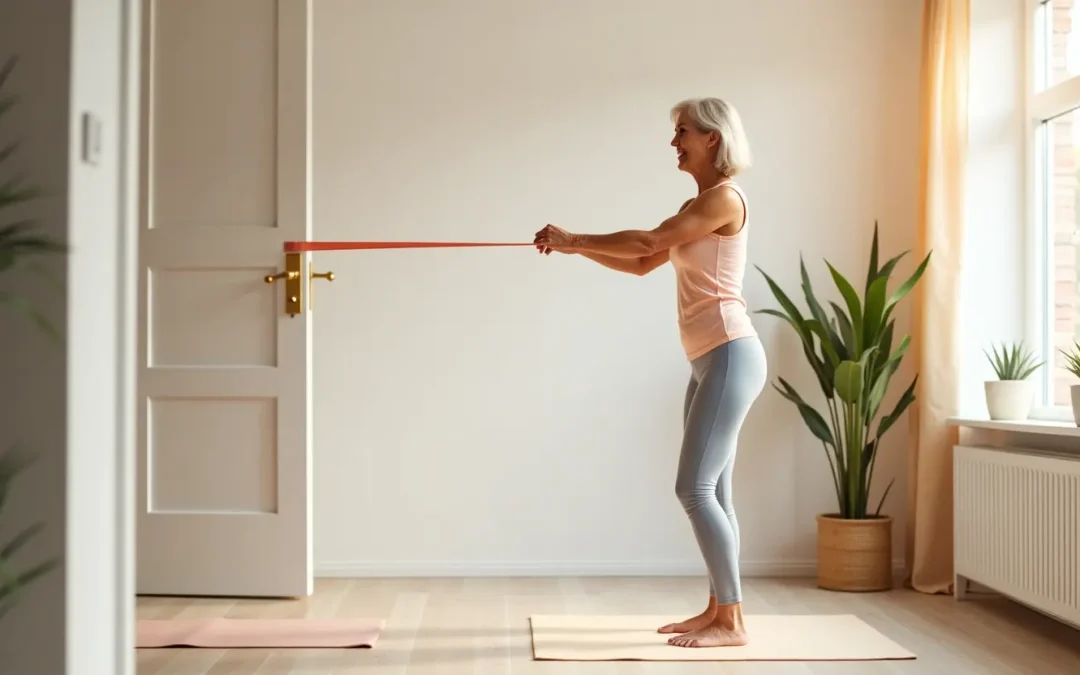Rebuilding Core with Resistance Bands After Childbirth or Midlife Changes


Rebuilding core with resistance bands is an effective way to restore strength, improve posture, and reconnect with your deep abdominal and back muscles after childbirth or midlife changes. These gentle exercises help you regain stability safely and efficiently.
Why Core Strength Matters More Than Ever
A stable, responsive core isn’t just about appearances—it’s the foundation for everything you do. From carrying kids to standing tall, your deep core muscles and fascia provide critical support. Rebuilding core with resistance bands can help re-engage these muscles, especially if you’ve experienced:
- Childbirth (vaginal or C-section)
- Hormonal shifts during midlife or perimenopause
- Prolonged sitting or poor posture at work
When your fascia and muscle coordination go a bit “offline,” you may feel weaker, tighter, or prone to back pain. Fortunately, rebuilding your core with resistance bands using proper technique can make a noticeable difference fast. The following moves are designed to help you reconnect with your core safely. Start with light tension and focus on smooth, fluid motion—not force.
Gentle Resistance Band Exercises to Wake Up Your Fascia and Strengthen Your Core
Start with light tension. Focus on smooth movement rather than force to engage your core effectively.
Standing Band Rows (Straight Row for Posture and Core)
- Anchor the band at chest height (a door handle works well).
- Stand facing the anchor point, feet hip-width apart.
- Hold the ends of the band in both hands, palms facing each other.
- Step back until there is gentle tension in the band when your arms are extended in front of you.
- Exhale and pull your elbows straight back along your sides, squeezing your shoulder blades together. Keep your ribs relaxed and your belly lightly engaged. Inhale and slowly extend your arms forward again.
- Avoid shrugging your shoulders or leaning back.
Seated Band Leg Press
- Sit on the floor with legs bent.
- Loop the band around the balls of your feet, hold ends in hands.
- Exhale and press your feet forward until your legs are straight.
- Keep your spine tall and belly softly active.
- Inhale to bend knees back in.
- You’ll feel this in your lower belly and thighs.
Side-Lying Band Clamshell
- Lie on your side with hips and knees bent.
- Loop the band above your knees.
- Exhale as you open your top knee up, keeping feet together.
- Focus on feeling the side of your hip and your waist engage.
- Inhale to lower slowly.
Tips to Get the Best Results
For best results, aim to move with intention and awareness, not just effort. That’s how fascia truly responds. Keep these tips in mind:
- Slow is strong: Rushing through reps can reduce how much your fascia engages.
- Breathe naturally: Calm, steady breathing improves core activation and lowers tension.
- Gentle belly hug: Instead of bracing hard, softly draw your lower belly inward.
- Watch for doming: If you notice a bulge down your midline, reduce tension or adjust your range of motion.
Join the Conversation
These exercises are only the start. Your breath and awareness make the biggest difference. Our resident breathing expert will be sharing deeper breathing techniques that tie everything together.
You may also want to read:
You can Comment or ask questions on this post in Instagram.
We would love to hear from you!
Want to explore more about how fascia influences movement, mood, and memory?
Visit our fascia-informed movement and emotional wellbeing homepage to dive deeper into the science and practice.
